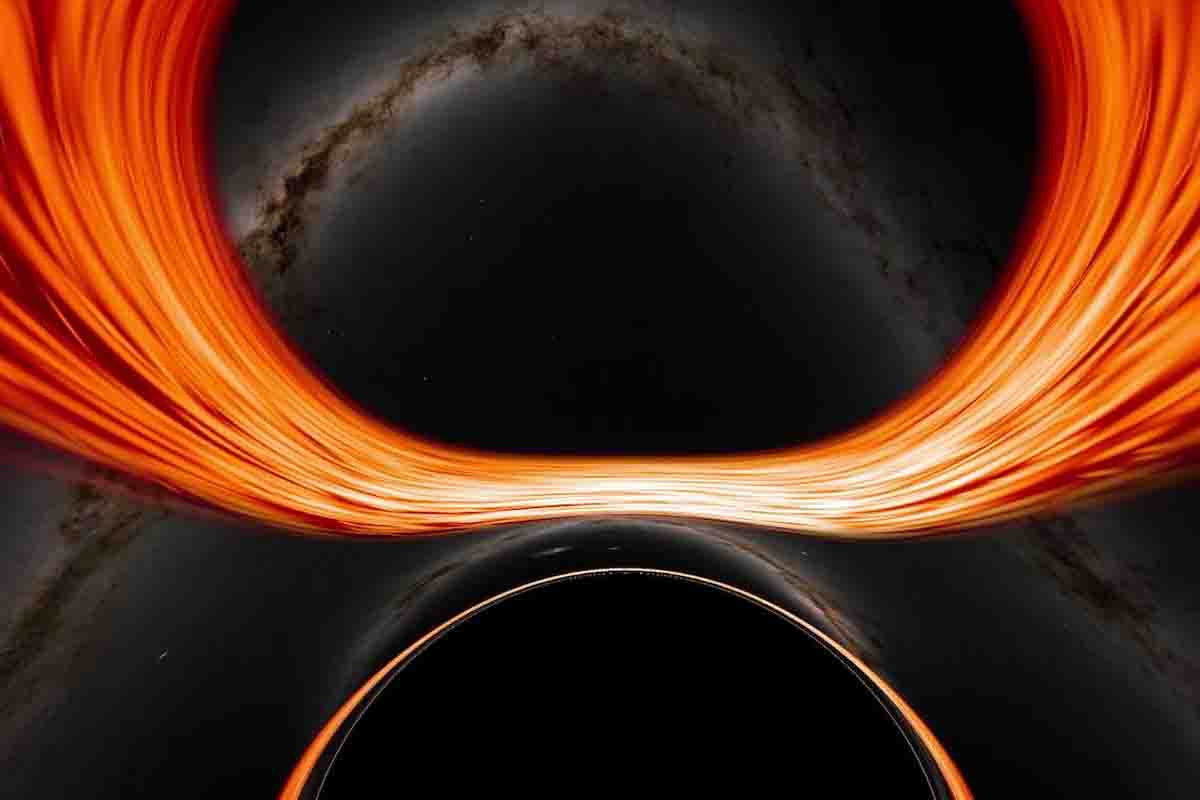NASA's latest stunning film: a virtual journey beyond the event horizon of a black hole to explore the effects of general relativity in a compelling simulation powered by the space agency's most powerful supercomputer

©Jeremy Schnittman, Goddard Space Flight Center / NASA
The NASA has released an extraordinary visualization that allows one to explore the event horizon of a black hole—the threshold beyond which return is impossible. Crafted using the advanced capabilities of a NASA supercomputer, this simulation tracks the journey of a camera as it approaches, temporarily orbits, and finally crosses the event horizon of a massive black hole, akin to the one at the center of the Milky Way.
Astrophysicist Jeremy Schnittman from the Goddard Space Flight Center in Maryland, in collaboration with Brian Powell, utilized the Discover supercomputer at the NASA Center for Climate Simulation to produce two distinct scenarios: in one, the camera grazes the event horizon and is flung back; in the other, it crosses irretrievably. The project generated about 10 terabytes of data, a staggering amount equivalent to nearly half of the estimated textual volume of the Library of Congress, all accomplished in five days using just 0.3% of Discover’s 129,000 processors. On a standard laptop, completing such an analysis would take over a decade.
Size and nature of the simulated black hole
The black hole depicted in the simulation boasts a mass of about 4.3 million times that of the Sun, comparable to the behemoth that dominates the center of our galaxy. Schnittman points out that, if one had to choose, it is better to be drawn into a supermassive black hole rather than a stellar one. The latter, having up to about 30 solar masses, features smaller event horizons and more aggressive tidal forces, which could disintegrate any object approaching before it even reaches the horizon.
The simulations are available in various formats, including explanatory videos that act as true cosmic tour guides, demonstrating the peculiar effects of Einstein’s general theory of relativity. Some videos are created in 360-degree video format, allowing viewers to look around as they advance towards the black hole. Approaching at speeds near that of light, the light emitted from the accretion disk and surrounding stars becomes increasingly intense and brilliant, creating a visual effect similar to the increasing roar of a race car as it accelerates.
Source: NASA
